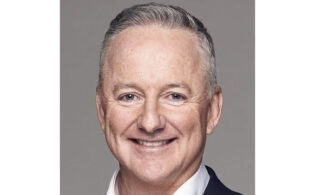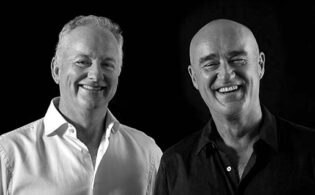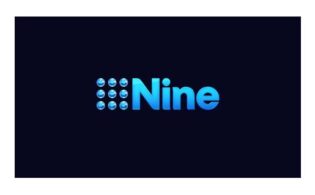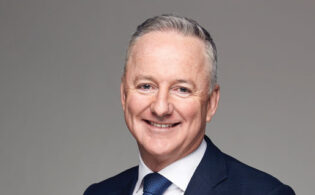PREMIUM: As Nine Network is celebrating its 60th anniversary this year, Hugh Marks, the CEO of Nine Entertainment Co., tells World Screen about the channel’s legacy and how it’s positioned to thrive in Australia’s changing media environment.
WS: In the very crowded Australian television landscape, how does Nine Network stand out and what does it represent for viewers?
MARKS: The traditional free-to-air side of our business, Nine Network, stands out through the strengths of its key pillars, which are news and current affairs, which millions of people come to every day; our premium sports, and we have one of the major winter sports and the major summer sport; and the quality of our premium entertainment offering, which, through shows like The Voice and The Block, continues to deliver big audiences. That diversity of local content and the move away from the domination of foreign content into spending more on premium and local content gives the traditional free-to-air business a great relevance going forward. When you add to that our AVOD business in 9Now, which has grown from 0 to 1.3 million users in [a few] months, and our fifty-fifty joint venture with Fairfax, Stan, which is performing to plan and is clearly the number one local SVOD service, we’re maintaining the strength of our traditional business while diversifying into the areas where our audiences are consuming video. We look at ourselves as a video business. We’ll make that video available wherever consumers want it.
WS: What role do homegrown dramas and comedies have on Nine?
MARKS: Interestingly, for drama, the business model is changing faster than other genres. The great thing about drama is that it has a long shelf life. We can repeat it and we can make it available on our on-demand services and, particularly when we’re in a position to stack various seasons of shows, they continue to pull in audiences over many, many years. That’s a real strength of drama. The challenge for drama is that its strength is also a weakness. In the overnight ratings, the requirement is for people to watch the show overnight, but audiences are certainly changing their behavior with scripted content. I think we’re in the middle of a period where that business model is changing. We need to embrace that world and we need to sell it to advertisers. We’re an advertiser-supported business. The value of [drama] will be in the substantial audiences it will have in the future in an on-demand context and in our ability to monetize that. There has been a bit of a change, and that change is ongoing. As we all invest in on-demand platforms and consumers start to use them more, I think drama will start to make a bit of a comeback in this market.
WS: How do the digital channels 9Go!, 9GEM and 9Life complement Channel Nine?
MARKS: The digital channels give us the ability to target an audience demographic that is still a reasonably broad demographic but is more targeted than the all-purpose main channel. With 9Life in particular, we have the ability to focus on grocery-buyers and children, a key ad demographic, and serve programming that can bring in that very specific demographic in big numbers. 9GEM is targeting a 40-plus female audience. 9Go! is more of a youth network. All three channels have a specific audience target, and over time that target will be recognized as having premium value because of the specific nature of the audiences.
WS: What roles do imported programs and formats play on Nine and the digital channels?
MARKS: Quality international formats will always be very important. A proven success overseas makes your job so much easier [when trying to create a hit show] in Australia. Generally, those formats are reasonably expensive, and they will be on the main channel, not on the multichannels at this point. They play a very important role in our premium tent-pole entertainment programming.
In terms of other imported programs, there is obviously declining relevance on the main channel. The availability of those programs on so many different channels and services means that audiences can consume them [easily]. So our ability to get a premium outcome is minimized. However, when you’re targeting a specific demographic on your multis, it means that the sort of programming that you can buy now, as opposed to what you used to buy, broadens as well. There’s so much good content out there. Imported programming on the multichannels is very much a part of their future.
WS: Tell us about the catch-up service 9Now. What prompted the decision to launch it and how has it been received by viewers?
MARKS: We did have a catch-up product before called 9Jumpin. It just wasn’t a great product, so 9Now was really about us saying that our catch-up service wasn’t world-class, and we needed a world-class service. We launched 9Now at the beginning of February, and at the end of June we had 1.3 million regular users. The viewership is up probably somewhere between 25 percent for long-form programming and up to 40 percent for short-form content. For us, 9Now is more than just a catch-up service; it’s an overall video service. Combining that long-form catch-up and short-form content is the business model. [We’ve seen the] number of regular users [increase] in such a short period of time, and that will continue to grow quite aggressively year on year. That is a real foundation for this business in the future.
WS: How did Stan come about?
MARKS: We could see from the way that audience consumption was changing that on-demand viewing is a very modern audience behavior. When consumers can get something when they want it, on the terms that they want it, at a pretty cost-effective price, that’s going to be appealing to them. It also ties into the change in the role imported programming plays in Australia. It used to be that the U.S. networks made a lot of big and broad scripted shows that translated well to the Australian market. Now, even in the States, SVOD is where a lot of the programming is going and the nature of the shows is different. They are a little more niche and much more “must watch” for a smaller audience.
WS: What are the forecasts for the advertising market in Australia this year?
MARKS: While the total ad market grows, free-to-air television looks to be slightly negative for this financial year. We recently announced an initiative, Think TV, which follows Thinkbox in the U.K. We as an industry need to get out and effectively market the dominance of free-to-air television in terms of its ability to reach a mass audience and the value of that mass audience to advertisers, particularly along brand campaigns. I do think that free-to-air has a strong future, particularly if we can continue to offer great content. That whole shift out of foreign into local content and the ability that provides us to offer more mass-audience propositions to advertisers will be the foundation of the business in the future.
WS: How have you been growing Nine Entertainment Co. through Nine Ventures?
MARKS: Very successfully over the history of this company. Someone recently gave me a number that said that the ventures that we were part of at some stage are now worth something like A$9 billion ($6.8 billion)—that’s more than the market cap of our company! It has been a very successful thing in the past. Having just come out of the private-equity debt workout and ownership and listing, we will continue to explore ventures in the future. I’m interested in ventures that are not completely divorced from our business, ones we can look at and see how they can fit with our business going forward. Those are the sorts of things that we’ll be looking at from this point.
WS: How much of a threat are platforms like Netflix to the free-to-air channels in Australia?
MARKS: Obviously there are audiences taking up those services. We can see that with Stan. That’s also fragmenting viewership of content. We look at that and say, first, it’s an opportunity for us to play in that market—can we be an aggressive player in the on-demand market to more than make up for whatever impact [it’s having] on the free-to-air market. Second, we’re certainly adjusting our television schedule to focus our investment on the areas where the audiences are consuming free-to-air viewing and taking investment out of those time slots and areas where the audiences are consuming more in an on-demand environment. It’s a little bit self-fulfilling, but I think that looking at on-demand as a complementary business to free-to-air is the right way for us to consider it. Of course, on-demand won’t just impact free-to-air; it will also impact other forms of television viewing such as pay TV in this market. For us, on-demand is very much a complement to the strength of the traditional free-to-air model, and we’re focusing our investment in those places where that complementary experience works best.
WS: What opportunities for growth do you see for Nine Entertainment Co. in the next 12 to 24 months?
MARKS: I certainly see opportunities for growth in the expansion of revenues in the on-demand environment; that’s both advertising-supported through 9Now and subscription-supported through Stan. Also, in a free-to-air context, our ability to change our cost base and adapt our programming schedule to reflect audience behavior means that we should be able to provide many [high-rated] shows to the market, and those—as audiences fragment across all media, not just ours—will increasingly have value. Our ability to continue to attract mass audiences around key program franchises, and the value that brings in a fragmented media context, combined with our ability to deliver a digitally informed audience—meaning data sales from the information that we have about audiences—will underpin the business going forward.
Another category that we will grow aggressively is our content business and the exploitation of that content in whatever ways we can. Video content is where the market is, and our ability to generate that video content is unrivaled, so we need to focus on the opportunities that brings. I think there are a number of growth opportunities for us.




